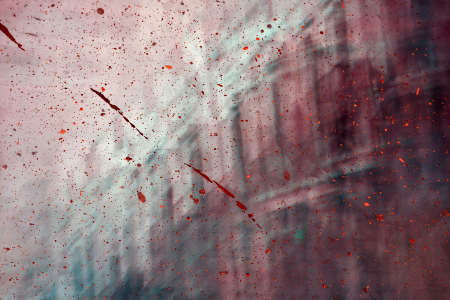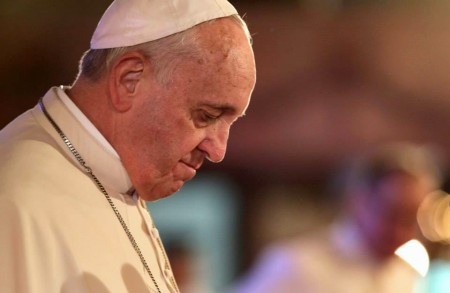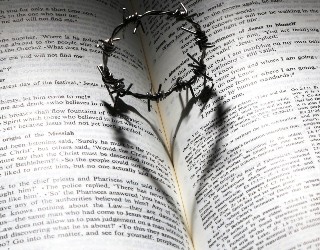We ask you, humbly: don't scroll away.
Hi readers, it seems you use Catholic Online a lot; that's great! It's a little awkward to ask, but we need your help. If you have already donated, we sincerely thank you. We're not salespeople, but we depend on donations averaging $14.76 and fewer than 1% of readers give. If you donate just $5.00, the price of your coffee, Catholic Online School could keep thriving. Thank you.Help Now >
New tech reveals REAL poverty locations and whether YOUR donations actually reach them
FREE Catholic Classes
Through advanced satellite imagery and artificial intelligence, Stanford scientists can map impoverished locations and track funding to see if the truly needy receive it or of donations and fundraising efforts go to fat-cat corporations.
 Hi readers, it seems you use Catholic Online a lot; that's great! It's a little awkward to ask, but we need your help. If you have already donated, we sincerely thank you. We're not salespeople, but we depend on donations averaging $14.76 and fewer than 1% of readers give. If you donate just $5.00, the price of your coffee, Catholic Online School could keep thriving. Thank you. Help Now >
Hi readers, it seems you use Catholic Online a lot; that's great! It's a little awkward to ask, but we need your help. If you have already donated, we sincerely thank you. We're not salespeople, but we depend on donations averaging $14.76 and fewer than 1% of readers give. If you donate just $5.00, the price of your coffee, Catholic Online School could keep thriving. Thank you. Help Now >
Highlights
Catholic Online (https://www.catholic.org)
8/21/2016 (7 years ago)
Published in Technology
LOS ANGELES, CA (Catholic Online) - According to a news statement released by Stanford University's School of Earth, Energy and Environmental Sciences, the hardest part of providing relief to the impoverished is locating them, particularly in Africa.
"Aid groups and other international organizations often fill in the gaps with door-to-door surveys, but these can be expensive and time-consuming to conduct."
The latest issue of the international hard sciences journal Science, the Stanford researchers propose a method to identify impoverished areas in a faster, more reliable way.
Marshall Burke, a coauthor in the study, explained there is little local-level information regarding poverty but with the use of satellite imagery, they were able to "collect all sorts of other data in these areas."
With the data collected by satellites, Stanford scientists believe they can use artificial intelligence to determine whether people living in particular regions are rich or poor.
The study's lead author, Neal Jean, believes the use of satellites and AI, computers will learn how to recognize "many things that are easily recognizable to humans - things like roads, urban areas and farmland."
Using this data, the computer can measure wealth.
So far the scientists have discovered the program works well to learn the algorithm and pick images indicating wealth or poverty.
Should the AI continue, it can provide reliable, real-time poverty maps of the world.
This information can help governments and aid groups enact and evaluate policies more effectively, which includes the assurance money and aid is really reaching areas shown to be in dire need.
Marc Levy, a deputy director of the Center for International Earth Science Information Network at Columbia University, was not involved in the study but believes the information it can capture "demonstrates the power of combining multiple data streams to measure things that matter" but worries it will not be enough to fully take the place of on-the-ground surveys.
In fact, Levy believes the most accurate and helpful information can come as a result of a satellite-survey mix.
Currently, researchers are attempting to use the technique in sub-Saharan Africa, but hope to cover the world in the future.
The Assistant professor at the University of Berkley believes the program is a wonderful technique.
He wrote: "For social welfare programmes, some of which already use satellite imagery to identify eligible recipients, higher-fidelity estimates of poverty can help to ensure that resources get to those with the greatest need."
We ask you, humbly: don't scroll away.
Hi readers, it seems you use Catholic Online a lot; that's great! It's a little awkward to ask, but we need your help. If you have already donated, we sincerely thank you. We're not salespeople, but we depend on donations averaging $14.76 and fewer than 1% of readers give. If you donate just $5.00, the price of your coffee, Catholic Online School could keep thriving. Thank you.Help Now >
---
'Help Give every Student and Teacher FREE resources for a world-class Moral Catholic Education'
Copyright 2021 - Distributed by Catholic Online








 Daily Readings for Saturday, April 20, 2024
Daily Readings for Saturday, April 20, 2024 St. Marian: Saint of the Day for Saturday, April 20, 2024
St. Marian: Saint of the Day for Saturday, April 20, 2024 Children's Prayer For Parents: Prayer of the Day for Saturday, April 20, 2024
Children's Prayer For Parents: Prayer of the Day for Saturday, April 20, 2024

